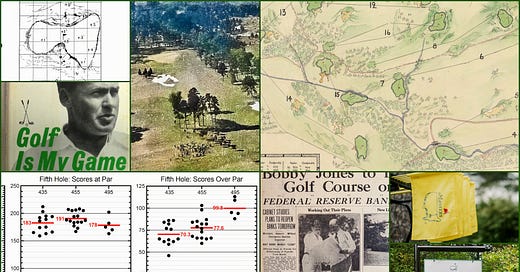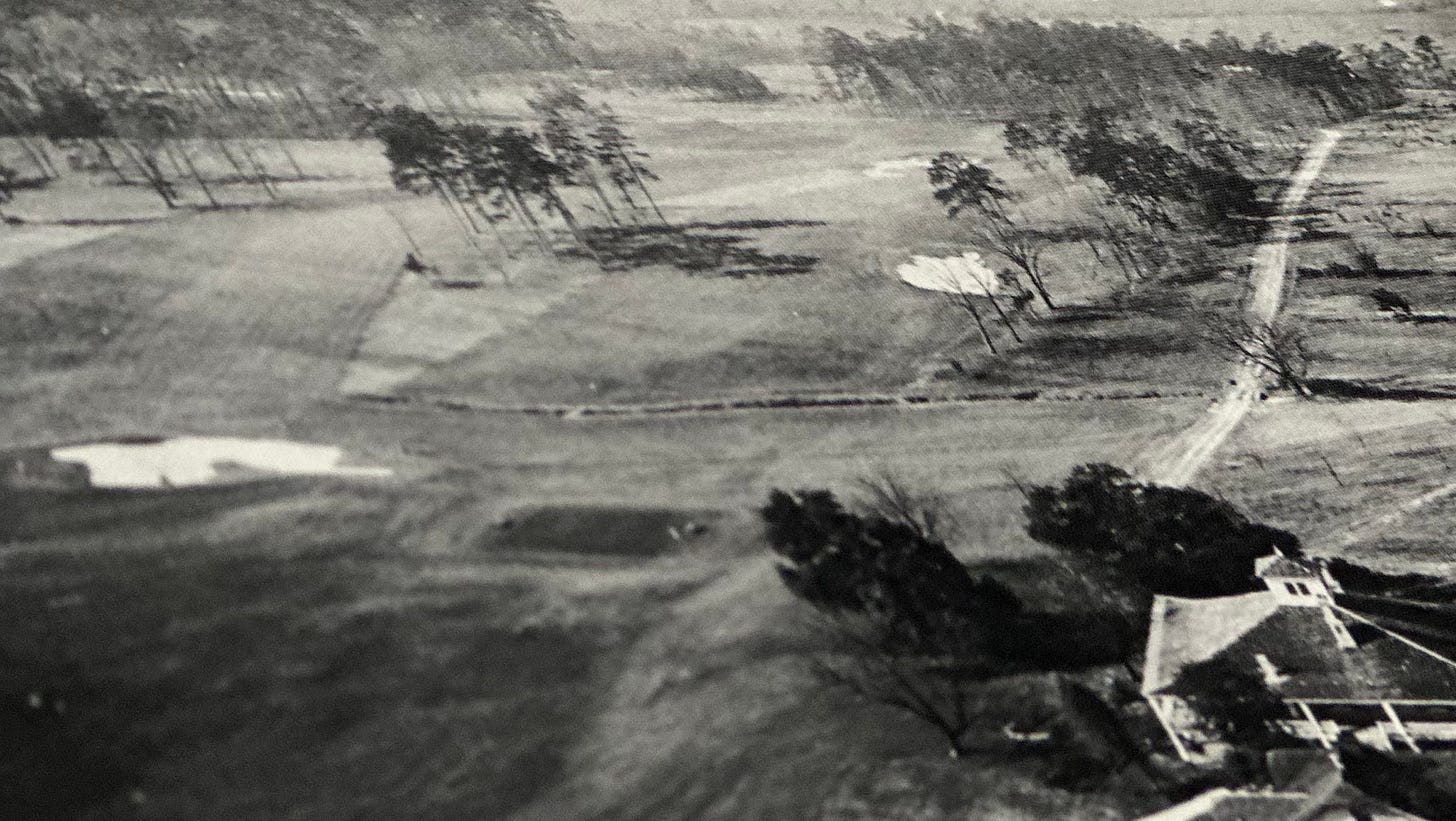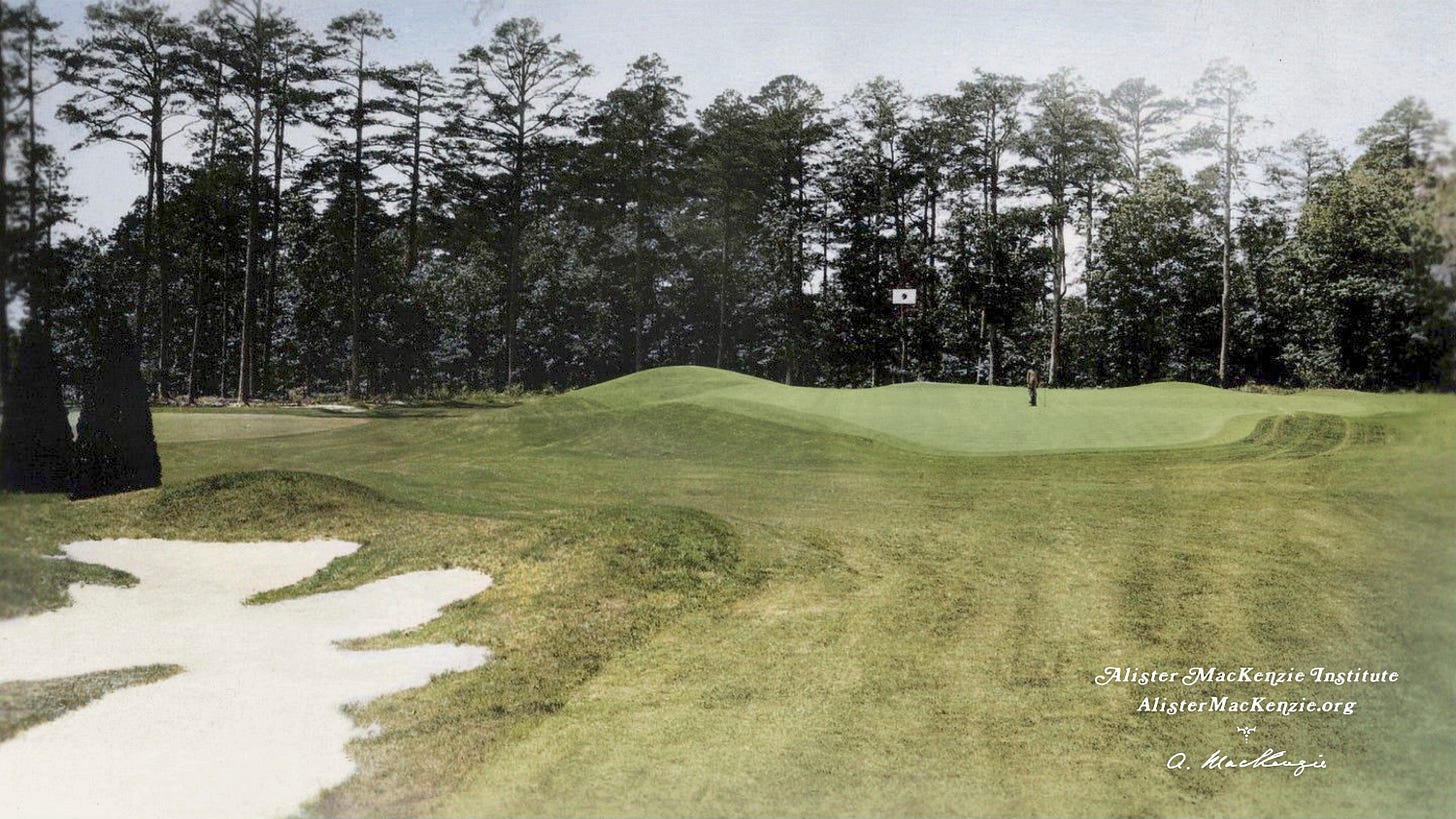Part 2: Augusta National's Evolving 1-5-7
A closer at look at the original design, evolution and status of three key Masters holes as the 2024 tournament approaches.
Part I looked at Augusta National’s first nine’s flow and how a certain character was established to become synonymous with The Masters. Today we look at three holes where the author senses changes have possibly gone too far. Part III will then look at the cold, hard numbers.
Any worthwhile excursion is full of ups and downs, highs and lows, and enough surprises to keep things lively. Whether it’s a performance, a novel, a hike, an album, a day at the museum, any kind of race course or an idyllic trip around a golf course, the best sequencing offers thrills, hardships and surprises. But the very best also deliver plenty of reward to offset whatever suffering we have to endured. Otherwise why would we want to come back?
Augusta National’s journey has long been centered around the enticing par 5s and par 3s rewarding smarts, skill and well-timed bursts of risk-taking. The par 4s have always been more about making sure to only pounce at select openings. But there has always been a reward for good shots. Bobby Jones wouldn’t have it any other way.
Yet every worthwhile golf course lays out its story in a different order. The best are full of odd mood swings. Some frontload the trouble and let you catch up on the way back to the clubhouse. Some are accidentally “balanced” to call on every shot imaginable over the course of 18 holes. And most good ones have bursts of drama offset by key, calming stretches before a big finish.
This variety might explain why golfers are less enthused by cookie-cutter routings that seem drawn up in an office to check off stock boxes and ensure lavish bank loans to calm nervous investors. But these types of courses also clearly drift far from golf’s origins as an uncertain cross-country excursion.
When Augusta National’s nines were permanently locked into today’s order, changes over the decades generally protected or even accentuated its beautiful mix of holes. (I’m tactfully ignoring a Clifford Roberts turning the eighth green into a flying saucer to reach a grander point.) Throw in epic shots from great players that we relive in highlight reels every year and still wonder how they pulled them off, and Augusta National became America’s course. Even those who’d never played there understood where a player could attack and when it was best to play safe.
How many venues in sports have anything remotely close to that kind of relationship with its fans? The answer is a big, fat, zilch.
This century, big changes came in bursts to offset a lack of equipment regulation to keep tournament courses relevant. Augusta National had the resources and surrounding real estate—after very expensive purchases—to keep the classic holes playing as they always had. At least, in theory.
But some of those ensuing changes feel like they’ve altered the symphonic movement of a masterpiece. So before we open the big envelope and get to the cold, hard numbers tomorrow, I thought it’d be instructive to share an abbreviated summary of how the first, fifth and seventh holes have evolved—with plenty of pretty pictures* and old renderings if all this is just way too wonky!
*A special thank you to Josh Pettit for his restored and colorized images from The MacKenzie Reader, a stunning production and must-have compilation of all key writings by the great architect (I contributed a short essay on the Good Doctor’s southern California visits).
First Hole
Name And Yardage: Tea Olive, 445 yards
Original Name And Yardage: Cherokee Rose, 400
Inspiration: No particular hole.
MacKenzie: “A drive that is long and straight skirting a group of trees on the right will be in a favorable position.”
Jones: “The fairway does expand on the right as it approaches the green. Ordinarily, the fairway bunker on the right presents no problem for the tournament player.”
Creation: A gently-bending par 4 where the player who took on the right side bunker and trees was afforded a better view and angle to some hole locations.







